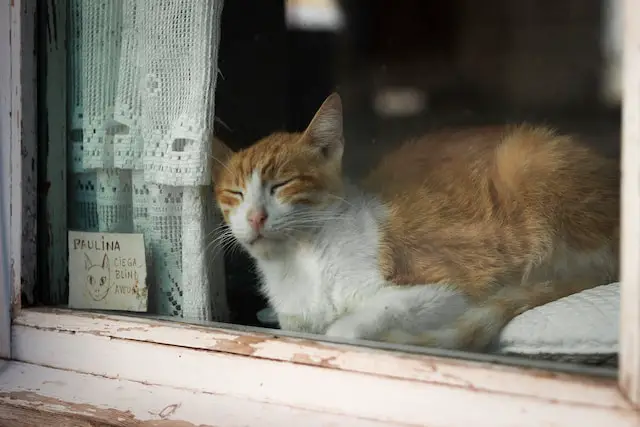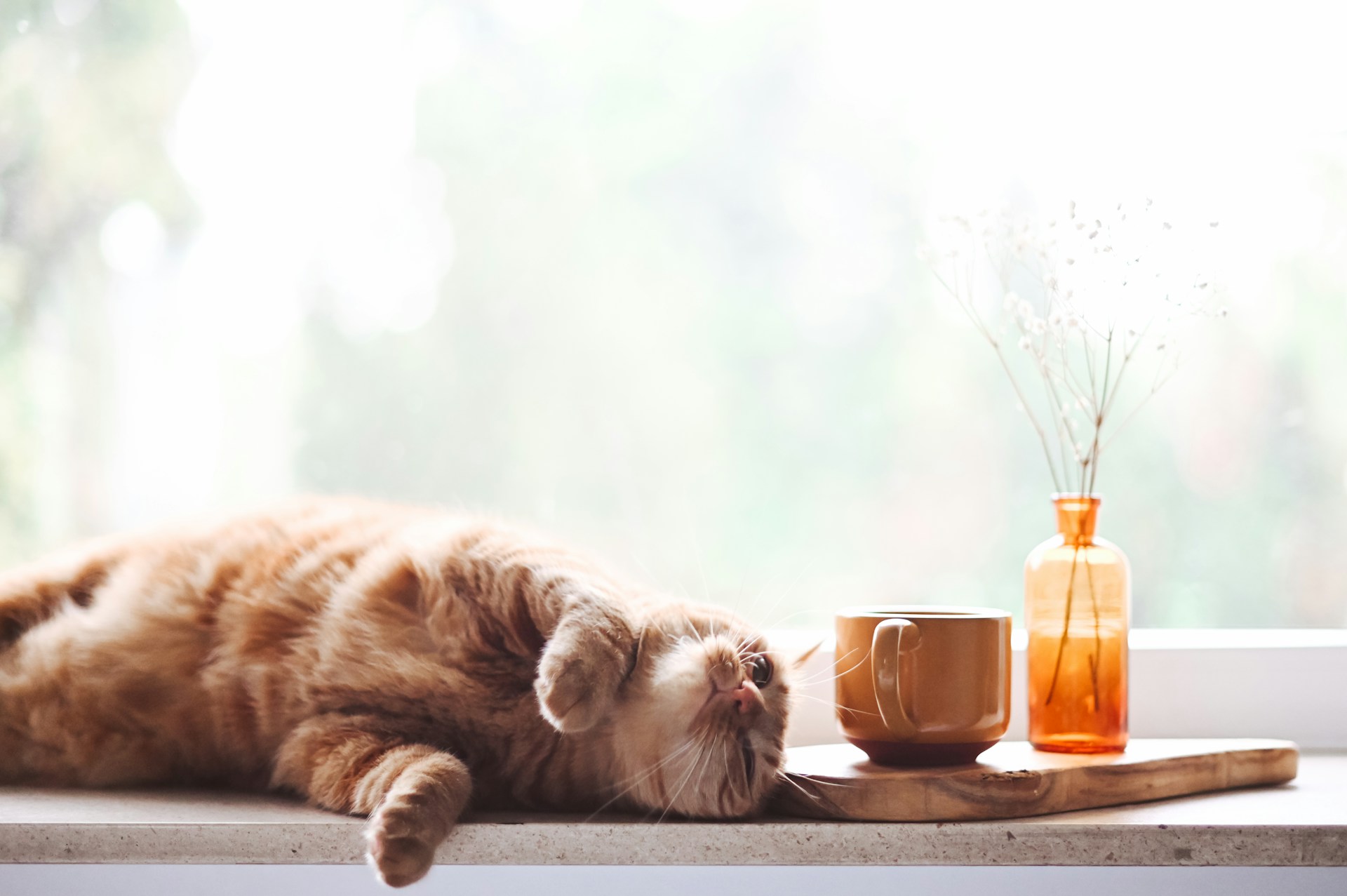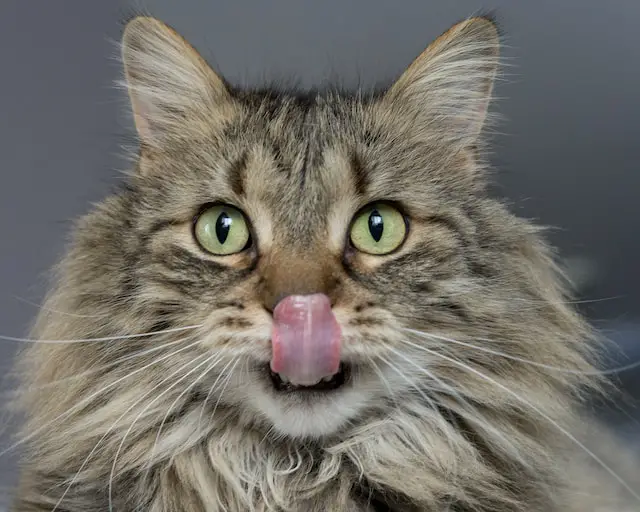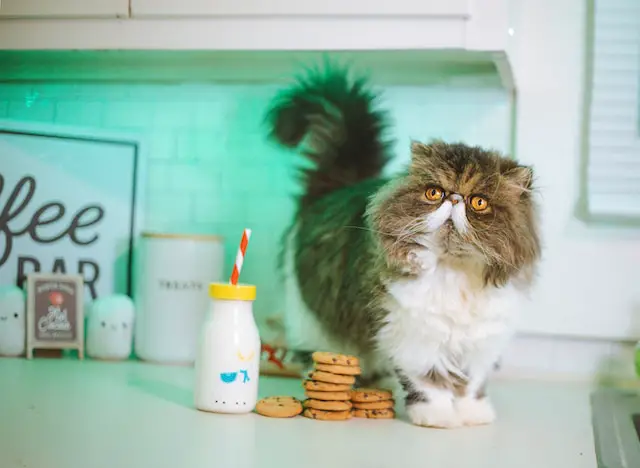The Fascinating World of Cats in Spain: History, Culture, and Care
Introduction
Cats hold a special place in the hearts of many Spaniards, weaving their way into the country’s history, culture, and daily life. From ancient times to the modern day, these feline companions have left an indelible mark on Spain. In this article, we will explore the fascinating world of cats in Spain, delving into their historical roots, cultural significance, and contemporary care. Whether you are a cat lover or simply curious about the role of these animals in Spanish society, you’ll find a wealth of information that highlights why cats are cherished in Spain.
The journey of cats in Spain begins with their early presence and extends through various eras, each adding layers to their story. Today, cats are not only beloved pets but also symbols of independence and mystery. Their influence can be seen in Spanish folklore, art, and literature, reflecting a deep connection between people and their feline friends.
In modern Spain, the popularity of cats continues to grow, with diverse breeds and a thriving culture of cat ownership. However, the country also faces challenges, such as managing feral cat populations in urban areas. Through various initiatives, communities are working to ensure the well-being of all cats, whether domesticated or wild.
As we explore the world of cats in Spain, we will also provide practical tips for cat care, insights into adoption trends, and a look at the efforts of animal welfare organizations. This comprehensive guide will offer a thorough understanding of the multifaceted relationship between Spain and its cats, showcasing the enduring love and respect these animals receive.
Historical Background
Early Presence of Cats in Spain
Cats have been part of Spanish life for centuries, with their presence dating back to ancient times. Initially, cats were introduced to Spain by traders and travelers from regions such as Egypt and the Middle East. These early feline settlers were valued for their ability to control pests, especially in grain storage areas, which helped protect food supplies from rodents.
Over time, cats began to weave their way into the fabric of Spanish society, becoming more than just pest controllers. They were appreciated for their companionship and their independent yet affectionate nature. Historical records and archaeological findings suggest that cats were domesticated in Spain as early as the Roman era, highlighting their long-standing relationship with humans.
Role of Cats in Spanish History
Throughout Spanish history, cats have held various roles and have been seen in different lights. During the Middle Ages, cats were often associated with superstitions and myths. In some regions, they were believed to possess mystical powers, and their presence was linked to both good and bad omens. This dual perception of cats led to a complex relationship with these animals, influencing how they were treated and regarded in society.
In more recent history, cats have become cherished pets and symbols of comfort and home. They appear in numerous works of Spanish literature and art, reflecting their significant cultural presence. For example, famous Spanish painters like Francisco Goya and Salvador Dalí included cats in their artworks, capturing their enigmatic and graceful nature.
The historical journey of cats in Spain is a testament to their resilience and adaptability. From ancient times to the modern day, cats have navigated through various societal changes, maintaining their place as beloved companions. This historical backdrop sets the stage for understanding the cultural significance and modern-day care of cats in Spain, illustrating why these animals continue to be an integral part of Spanish life.
Cultural Significance
Cats in Spanish Folklore and Traditions
Cats have woven themselves into the rich tapestry of Spanish folklore and traditions, often appearing as mysterious and enchanting creatures. In many tales, cats are depicted as guardians of the night, protectors against evil spirits, and symbols of good fortune. These stories have been passed down through generations, reflecting the deep-rooted reverence for cats in Spanish culture.
One popular folktale tells of a cat that saved a village from a plague of rats, earning the everlasting gratitude of the townspeople. This story, and others like it, highlight the historical appreciation for the practical benefits that cats provided. Additionally, in some regions of Spain, it is believed that black cats bring good luck, a stark contrast to the negative superstitions surrounding them in other cultures.
Spanish festivals and celebrations also feature cats in various forms. During the annual “Fiesta de los Gatos,” a festival dedicated to cats, communities come together to celebrate and honor their feline friends. This event includes parades, storytelling sessions, and activities that emphasize the cultural importance of cats.
Representation of Cats in Spanish Art and Literature
Cats have not only been a part of Spanish folklore but have also made significant appearances in Spanish art and literature. Renowned Spanish artists have captured the essence of cats in their work, portraying them as elegant, independent, and enigmatic beings.
Francisco Goya, one of Spain’s most famous painters, often included cats in his paintings. In his work “The Sleep of Reason Produces Monsters,” a cat lurks in the background, symbolizing the hidden fears and subconscious thoughts of the human mind. Similarly, Salvador Dalí, known for his surreal and imaginative art, depicted cats in various forms, blending reality with fantasy to highlight their mysterious nature.
In literature, Spanish authors have also paid homage to cats. The poet Federico García Lorca, for example, wrote about cats in his poems, using them as metaphors for freedom and mystery. Cats appear in numerous Spanish novels and stories, where they are often portrayed as wise and perceptive creatures, reflecting the deep connection between Spaniards and their feline companions.
The cultural significance of cats in Spain is evident through their prominent roles in folklore, art, and literature. These cultural elements not only celebrate the unique qualities of cats but also underscore their enduring presence in Spanish society. As we move forward, we will explore the modern-day relationship between Spaniards and their cats, shedding light on popular cat breeds, contemporary trends, and the challenges faced by feral cat populations in urban areas.
Cats in Modern Spain
Popular Cat Breeds in Spain
In modern Spain, the love for cats is evident in the wide variety of breeds that are popular among cat enthusiasts. While Spain does not have its own native cat breeds, many international breeds have found a home here, each with its unique charm and characteristics.
One of the most popular breeds in Spain is the Siamese cat, known for its striking blue eyes and vocal personality. Siamese cats are cherished for their affectionate nature and intelligence, making them a favorite among Spanish households. Another favored breed is the Persian cat, admired for its long, luxurious coat and calm demeanor. Persian cats are often seen as the epitome of feline elegance, and their gentle nature makes them ideal companions.
The British Shorthair, with its round face and dense coat, is also a common sight in Spanish homes. This breed is appreciated for its easygoing temperament and robust health. Additionally, the Maine Coon, one of the largest domesticated cat breeds, has gained popularity for its friendly and sociable nature. Known as “gentle giants,” Maine Coons are well-loved for their playful and affectionate behavior.
These breeds, along with many others, contribute to the diverse and vibrant feline population in Spain. Each breed brings its own unique traits, adding to the rich tapestry of cat ownership in the country.
Current Trends in Cat Ownership
Cat ownership in Spain has seen significant growth in recent years, with more and more people choosing cats as their preferred pets. This trend is driven by various factors, including the convenience of having a low-maintenance pet in urban environments and the increasing recognition of the emotional benefits that cats provide.
Many Spaniards, especially those living in apartments and smaller homes, find cats to be ideal companions due to their independent nature and minimal space requirements. The rise of pet-friendly policies in residential buildings and public spaces has also contributed to the growing popularity of cats. More cafes, hotels, and even workplaces in Spain are becoming cat-friendly, reflecting the societal acceptance and love for these animals.
Social media has played a crucial role in this trend, with numerous Spanish cat owners sharing their feline friends’ antics and adorable moments online. This visibility has helped to normalize and celebrate cat ownership, encouraging others to adopt and care for cats.
Furthermore, the COVID-19 pandemic has had a notable impact on pet adoption rates, including cats. During lockdowns, many people sought the companionship and comfort that pets provide, leading to an increase in cat adoptions. Animal shelters and rescue organizations across Spain have reported higher adoption rates, a positive trend that has brought more cats into loving homes.
As the popularity of cats continues to grow in Spain, it is important to address the challenges that come with it, such as managing feral cat populations and ensuring responsible pet ownership. In the next section, we will delve into the issue of feral cats in Spanish cities and the efforts being made to address this concern.
Feral Cats and Urban Life
The Issue of Feral Cats in Spanish Cities
Feral cats are a common sight in many Spanish cities, where they navigate the bustling urban landscape with agility and independence. These cats, often born in the wild or abandoned by previous owners, live in colonies and rely on their instincts to survive. While some city residents view feral cats with affection, recognizing their role in controlling pest populations, others see them as a challenge due to their impact on local wildlife and public health.
The presence of feral cats in urban areas raises several concerns. Firstly, these cats can spread diseases such as feline leukemia and FIV (feline immunodeficiency virus) among domesticated cats. Secondly, their hunting behavior poses a threat to local bird populations and other small wildlife. Lastly, feral cats often lead difficult lives, facing hunger, disease, and injury without the care and protection that domesticated cats receive.
Efforts and Initiatives for Managing Feral Cat Populations
To address the challenges posed by feral cats, various initiatives and programs have been implemented across Spain. One of the most effective strategies is the Trap-Neuter-Return (TNR) program, which aims to humanely control and reduce feral cat populations.
TNR involves capturing feral cats, spaying or neutering them, and then returning them to their original locations. This method not only prevents the birth of more feral kittens but also helps stabilize the cat colonies over time. In addition to neutering, these programs often include vaccinations to improve the overall health of the feral cat population. Many animal welfare organizations in Spain, such as ANAA (Asociación Nacional Amigos de los Animales) and SOS Gatos, actively participate in TNR efforts, working with local communities to manage and care for feral cats.
Another important aspect of managing feral cat populations is community involvement. Educating the public about the importance of spaying and neutering pets, as well as the benefits of TNR programs, helps garner support and participation from residents. Volunteers play a crucial role in these initiatives, from trapping and transporting cats to providing post-surgery care and monitoring cat colonies.
In addition to TNR, there are various cat shelters and rescue groups dedicated to finding homes for feral cats that can be socialized and adopted. These organizations often conduct outreach programs to encourage adoption and raise awareness about the plight of feral cats.
Municipal governments in some Spanish cities have also implemented policies to support feral cat management. For instance, designated feeding areas and shelters have been established in certain urban locations to provide feral cats with consistent food and protection from harsh weather conditions. These efforts not only improve the quality of life for feral cats but also help integrate them more harmoniously into the urban environment.
The issue of feral cats in Spain’s cities is multifaceted, requiring a combination of humane management practices, community engagement, and ongoing support from animal welfare organizations. As we continue our exploration of cats in Spain, the next section will focus on practical tips for caring for cats in the Spanish climate and recommended veterinary practices to ensure their well-being.
Cat Care in Spain
Tips for Caring for Cats in the Spanish Climate
Spain’s diverse climate, ranging from the hot Mediterranean coast to the cooler northern regions, requires specific care to ensure cats remain healthy and comfortable. Here are some essential tips for cat owners to keep their feline friends in the best condition throughout the year:
- Hydration: The hot Spanish summers can lead to dehydration. Ensure your cat has access to fresh water at all times. Consider using a cat water fountain to encourage drinking, as cats often prefer running water.
- Sun Protection: Cats love basking in the sun, but prolonged exposure can lead to heatstroke or sunburn, especially for cats with light-colored fur. Provide shaded areas and limit outdoor time during peak sun hours. Applying pet-safe sunscreen to areas with less fur coverage, like the ears and nose, can also help.
- Diet Adjustments: In warmer months, cats might eat less. Provide wet food options to help with hydration and ensure they receive balanced nutrition. In colder regions, a high-protein diet can help maintain their energy levels.
- Grooming: Regular grooming helps cats manage shedding, which is crucial in the hot climate. Brush your cat frequently to remove excess fur and prevent hairballs. For long-haired breeds, consider a professional grooming session during the summer to keep their coat manageable.
- Indoor Enrichment: During extreme weather, whether hot or cold, cats should spend more time indoors. Provide toys, scratching posts, and climbing structures to keep them entertained and active.
- Temperature Control: Ensure your home is comfortable for your cat. Use fans or air conditioning during hot spells and heating during colder months. Cats are sensitive to temperature changes and can suffer if the environment is too extreme.
Recommended Veterinary Practices and Pet Services in Spain
Ensuring regular veterinary care is vital for the health and well-being of cats. Spain offers a wide range of veterinary services and pet care options that cater to the needs of cat owners. Here are some key recommendations:
- Regular Check-Ups: Schedule annual veterinary check-ups to monitor your cat’s health. Regular visits help in early detection of potential health issues and ensure your cat stays up-to-date with vaccinations.
- Parasite Prevention: Fleas, ticks, and worms are common in Spain’s warm climate. Use preventative treatments recommended by your vet to protect your cat from these parasites. Regular flea and tick checks are essential, especially if your cat goes outdoors.
- Microchipping: Microchipping your cat is mandatory in many parts of Spain and is crucial for identification if your cat gets lost. Ensure your contact details are up-to-date in the microchip database.
- Spaying and Neutering: To prevent unwanted litters and contribute to the control of the feral cat population, spaying or neutering your cat is highly recommended. Many animal welfare organizations and veterinary clinics offer affordable options for these procedures.
- Pet Insurance: Consider investing in pet insurance to cover unexpected veterinary costs. This can provide peace of mind and ensure that your cat receives the best possible care without financial strain.
- Pet-Friendly Services: Spain has a growing number of pet-friendly services, including cat cafes, hotels, and even workplaces. Take advantage of these options to provide a stimulating environment for your cat. Many cities also have cat-specific boarding facilities and pet sitters who can take care of your cat when you are away.
By following these tips and recommendations, cat owners in Spain can ensure their pets lead healthy, happy lives. The unique climate and urban environment of Spain present specific challenges and opportunities for cat care, and with the right approach, cats can thrive in this beautiful country.
Adoption and Animal Welfare
Adoption Rates and Trends in Spain
Cat adoption in Spain has seen a positive trend in recent years, with more people opening their homes to feline companions. This increase can be attributed to a growing awareness of the benefits of adopting pets from shelters and the tireless efforts of animal welfare organizations. Let’s explore some of the key trends and factors driving cat adoption in Spain:
- Increased Awareness: Campaigns and awareness programs run by animal welfare organizations have significantly boosted the public’s understanding of the importance of adopting rather than buying pets. These initiatives highlight the plight of stray and abandoned cats, encouraging people to consider adoption.
- Social Media Influence: The rise of social media has played a crucial role in promoting cat adoption. Platforms like Instagram and Facebook are filled with heartwarming stories and pictures of rescued cats finding their forever homes. These posts not only inspire others to adopt but also showcase the diverse personalities and appearances of shelter cats.
- Pandemic Adoption Surge: The COVID-19 pandemic saw a notable increase in pet adoptions worldwide, and Spain was no exception. Many people sought companionship during lockdowns, leading to a surge in cat adoptions. This trend has continued, with many realizing the long-term benefits of having a pet.
- Pet-Friendly Policies: The adoption trend is also supported by more pet-friendly policies in housing and public spaces. Many residential buildings now accommodate pets, and cities are becoming more accommodating with pet-friendly cafes and parks, making it easier for people to adopt cats.
- Senior Cat Adoption: There is a growing trend towards adopting older cats, thanks to awareness campaigns emphasizing the advantages of adopting senior pets. Older cats are often calmer and more accustomed to living in a home environment, making them excellent companions for many adopters.
Animal Welfare Organizations and Their Work with Cats
Spain is home to numerous animal welfare organizations dedicated to rescuing, rehabilitating, and rehoming cats. These organizations play a crucial role in addressing the challenges faced by stray and abandoned cats. Here are some key organizations and their contributions:
- ANAA (Asociación Nacional Amigos de los Animales): ANAA is one of the leading animal welfare organizations in Spain, focusing on the rescue and rehabilitation of abandoned animals. They run extensive adoption programs and provide medical care, fostering services, and education on responsible pet ownership.
- SOS Gatos: This organization specializes in the care and management of feral cat colonies. They implement TNR (Trap-Neuter-Return) programs to control feral cat populations humanely. SOS Gatos also works on socializing feral kittens to prepare them for adoption.
- El Refugio: El Refugio is known for its comprehensive animal welfare programs, including cat rescue and adoption services. They also advocate for stronger animal protection laws and provide legal assistance in cases of animal abuse.
- Gatos Ancat: Gatos Ancat focuses on the rescue, rehabilitation, and rehoming of cats in urban areas. They run volunteer programs that involve the community in caring for stray cats and educating the public about responsible pet ownership.
- Asociación Protectora de Animales y Plantas de Madrid (APAP): APAP operates one of the largest animal shelters in Madrid, providing a safe haven for cats and other animals. Their adoption events and community outreach programs have successfully placed many cats in loving homes.
These organizations rely heavily on donations, volunteers, and community support to continue their vital work. By fostering a culture of compassion and responsibility, they are making significant strides in improving the lives of cats in Spain.
As we conclude this exploration of cats in Spain, it is clear that these animals hold a special place in the hearts of many. From historical significance and cultural representations to modern-day care and adoption efforts, cats are an integral part of Spanish society. The ongoing dedication of animal welfare organizations and the growing trend of cat ownership ensure that these beloved animals will continue to thrive.
Conclusion
The relationship between Spain and its cats is a rich tapestry woven through history, culture, and modern-day practices. From their early arrival on the Iberian Peninsula to their cherished status in contemporary society, cats have found a special place in the hearts of Spaniards. This enduring bond is reflected in various aspects of Spanish life, including folklore, art, and daily routines.
In the historical context, cats were revered for their pest control abilities and gradually became symbols of mystery and independence. Their presence in Spanish folklore and traditions underscores their cultural significance, with stories and beliefs that celebrate their unique qualities. Artistic representations in the works of famous Spanish painters and writers further highlight the deep connection between cats and Spanish culture.
Modern Spain continues to embrace cats, with a wide variety of popular breeds and a growing trend in cat ownership. The convenience of caring for cats in urban settings and the emotional benefits they provide have contributed to their increasing popularity. Social media and public awareness campaigns have played a crucial role in promoting cat adoption and responsible pet ownership.
Feral cats, while presenting challenges, are managed through effective programs such as Trap-Neuter-Return (TNR) and community involvement. These initiatives, supported by dedicated animal welfare organizations, help control and care for feral cat populations humanely. The work of organizations like ANAA, SOS Gatos, and El Refugio is vital in rescuing, rehabilitating, and rehoming cats, ensuring they receive the care and love they deserve.
Caring for cats in Spain requires attention to their specific needs, especially considering the country’s diverse climate. Tips for hydration, sun protection, grooming, and veterinary care are essential for maintaining the health and well-being of cats. The increasing availability of pet-friendly services and policies further supports the growing trend of cat ownership.
Adoption rates in Spain have surged, influenced by the pandemic and heightened awareness of animal welfare. The efforts of animal welfare organizations have been instrumental in this positive trend, encouraging more people to adopt rather than buy pets. These organizations also advocate for stronger animal protection laws and educate the public on responsible pet ownership.
As we conclude our exploration of cats in Spain, it is clear that these animals are more than just pets; they are integral to the fabric of Spanish society. The ongoing love and respect for cats, coupled with dedicated efforts to ensure their welfare, highlight the deep and enduring bond between Spain and its feline companions.
This journey through the fascinating world of cats in Spain showcases the unique relationship between humans and animals, reflecting a shared history and a hopeful future. Whether through adoption, cultural appreciation, or practical care, the commitment to cats in Spain is a testament to the special place they hold in the hearts of many.






Comments are closed.